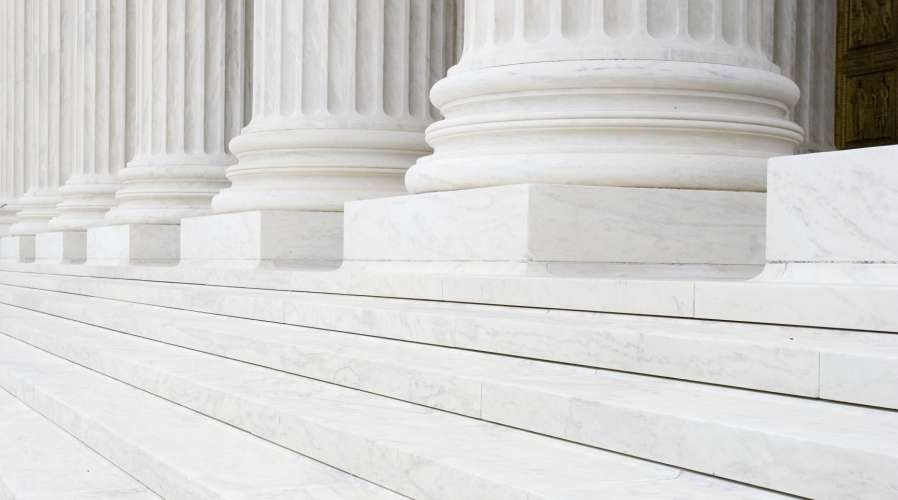
(4 min read)
Rachel Reeves delivered her Budget for the UK on 26 November. We run through the main points to note for businesses, individuals and growth companies. Our main takeaways are that any changes and tax rises were not as severe as could have been and there are some interesting opportunities, for growth businesses in particular.
Impact for businesses
- CGT - Share exchanges & reorganisations: New anti-avoidance provisions apply to share exchanges and company reorganisations with effect from 26 Nov 2025. They apply if the arrangements have a main purpose of tax avoidance.
- Stamp duty reserve tax - Relief changes: Transfers of a company’s securities will be subject to relief from the 0.5% Stamp Duty Reserve Tax charge for three years following its UK regulated market listing, subject to restrictions on change of control.
- Increase on minimum wage and national living wage: The living wage is increasing to £12.71 per hour. Minimum wage is increasing to £10.85 per hour for 18-20 year olds and £8.00 per hour for 16-18 year olds and apprentices.
- Increase in eligibility limits for EMI: Applies to EMI options granted or unexercised on or after 6 April 2026. Aggregate value of options at grant up to £6m; gross assets limit now £120 million; up to 500 employees; exercise period increases from 10 to 15 years.
- Cut in CGT relief for EOTs: Capital Gains Tax Relief is being reduced from 100% to 50% on 27 November 2025 on disposals of shares by business owners to Employee Ownership Trusts (EOTs).
- Corporation tax: Increases to late filing penalties: The penalties for submitting a Corporation Tax return late will be increased to double the amount of the current rates.
- CGT - Incorporation relief: A new requirement to actively claim incorporation relief for transfers of a business to a company on or after 6 April 2026. Relief was previously automatic.
- Major projects - Advance tax certainty service: ATCS will launch in July 2026 to provide clearances for Corporation Tax, Stamp taxes, VAT, PAYE and the Construction Industry Scheme. This will apply to major projects exceeding £1bn over the life of the project.
Impact for growth companies
- EMI schemes: From 6 April 2026 the gross assets test will increase from £30m to £120m and the employee test from 250 to 500 employees. The maximum lifespan of an EMI option will extend to 15 years from 10.
- EMI is a vital way of incentivising key staff and this measure will considerably extend the reach of EMI to a wider range of growth companies.
- EIS/VCT: Increase of gross assets test from £15million to £30million and annual investment limit from £5million to £10million.
- These limits have been fixed for many years and these increases may help more established businesses attract external investment.
- EOT Changes: For disposals on 26 November 2025 onwards, only 50% of gains arising on sales to EOTs will be exempt from CGT.
- EOTs will still be a viable alternative to “conventional exits”, but this is a significant restriction. It seems to be triggered by a realisation that this relief has costed the government more than expected.
- Tax Support for Entrepreneurs: A call for evidence has been announced seeking views on policy support for growth companies.
- It is certainly positive that this has been announced as an area of focus, albeit there are no obvious and enticing immediate proposals as to any changes that may be made.
Impact for individuals
- Freeze on Personal Allowances: The first £12,570 of income is free of income tax. Income above the higher rate threshold of £50,270 is subject to income tax at 40%. These thresholds will subsist beyond April 2028 until April 2031, in effect pushing more people into tax due to inflation.
- Dividend Income: From April 2026, 2% will be added to the basic rate and higher rate for dividends, such that they become 10.75% and 35.75%, respectively. The additional rate of 39.35% will remain unchanged.
- Salary Sacrifice for Pensions: From April 2029, only the first £2k of any yearly pension contributions via salary sacrifice will be exempt from NICs. Anything above this amount will be aligned with current “net pay” arrangements.
- Savings and property income: From April 2027, 2% will be added to the prevailing rate of income tax applying to savings income. There will be a new category of property income, which will also be subject to a 2% surcharge.
- Transferrable IHT limit: The £1m limit for claiming 100% business property relief and agricultural property relief (due to come into effect on 6 April 2026) is frozen until 2031, although it will now be possible to transfer any unused allowance between spouses.
- Formerly excluded property trusts cap: IHT charges on formerly excluded property trusts (which were brought back into the IHT regime from 6 April 2025) will now be subject to a cap on charges of £5million per trust over a 10 year cycle.
- IHT anti-avoidance measures extended: IHT reliefs on gifts to charities will no longer be available in relation to gifts to trusts for charitable purposes or community amateur sports clubs. Exit charges will be introduced for those seeking to remove non-UK trust property from the IHT regime by changing the residency of the settlor.
- Residential Property Surcharge: From April 2028, a surcharge of £2.5k will be imposed on residential properties worth £2m or more. There are set to be four bands, with the highest surcharge at £7.5k for properties worth than £5million.
Impact for Real Estate
- Significant changes
- Writing down allowances on the main pool of plant and machinery will be reduced from 18% to 14% from 1 April 2026 for Corporation Tax, or 6 April 2026 for Income Tax. This does not impact the 6% rate that applies to the special rate pool.
- From 1 April 2026, business rates multipliers for retail, hospitality and leisure properties will be 5p below their national equivalents. To fund this, properties with rateable values of £500,000 or more will be subject to a rate 2.8p higher than the national standard multiplier, with support available for those seeing bill increases.
- Other changes to be aware of
- Relief from Annual Tax on Enveloped Dwellings is available where residential property is held via a company for commercial purposes. The legislation will be updated to ensure that this relief is available to non-natural persons (i.e. companies, collective investment schemes and partnerships with corporate members).
- New anti-avoidance measures in effect from 6 April 2026 will permit HMRC to remove Gross Payment Status immediately from businesses which make or receive payments that they knew or ought to have known were connected to Construction Industry Scheme fraud, as well as assessing those businesses to additional tax and penalties.
- Opportunities
- A new 40% first-year allowance will be introduced for main rate expenditure on or after 1 January 2026. The Government has said it expects this to be beneficial primarily where the £1 million Annual Investment Allowance or existing First-Year Allowances (such as full expensing) are not available or not preferred.
- First-year allowances for electric vehicle changepoints will be extended by 12 months to 31 March 2027 for Corporation Tax purposes; or 5 April 2027 for Income Tax purposes.
- The Government will consult “shortly” on extending VAT zero-rating to supplies of land sold for social housing purposes.










